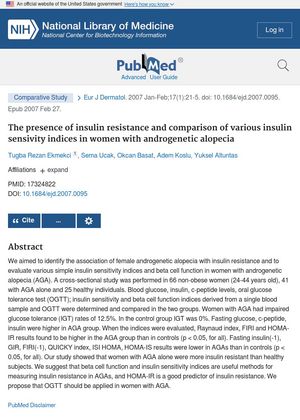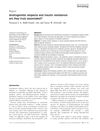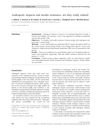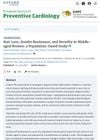The Presence of Insulin Resistance and Comparison of Various Insulin Sensitivity Indices in Women with Androgenetic Alopecia
May 2007
in “
PubMed
”

TLDR Women with androgenetic alopecia (AGA) are more insulin resistant than healthy women, with various insulin sensitivity indices being higher in the AGA group. An oral glucose tolerance test is suggested for women with AGA.
In a 2006 cross-sectional study involving 66 non-obese women aged 24-44, 41 with androgenetic alopecia (AGA) and 25 healthy individuals, it was found that women with AGA were more insulin resistant than healthy subjects. The study showed that women with AGA had impaired glucose tolerance (IGT) rates of 12.5%, while in the control group IGT was 0%. Fasting glucose, c-peptide, and insulin were higher in the AGA group. Various insulin sensitivity indices such as Raynaud index, FIRI, and HOMA-IR were higher in the AGA group than in controls, while fasting insulin(-1), GIR, FIRI(-1), QUICKY index, ISI HOMA, HOMA-IS results were lower in AGAs than in controls. The study suggested that beta cell function and insulin sensitivity indices are useful methods for measuring insulin resistance in AGAs, and HOMA-IR is a good predictor of insulin resistance. The researchers proposed that an oral glucose tolerance test (OGTT) should be applied in women with AGA.










